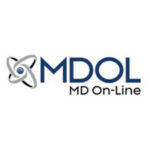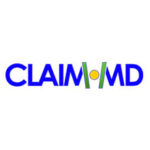Physical Therapy Digital Marketing | Go Local First to Find New Patient
With 20 states allowing unrestricted direct access to physical therapists and, hopefully, more states on the way, patients are likely to be looking for physical therapists online. The practice’s digital presence would be crucial to getting found online. There are several digital channels to leverage including search, social media, and ads. Websites that are optimized for search engines would play a pivotal role in helping patients find the practice.
Physical Therapy Digital Marketing | Start with Organic Local
Organic search is all about keywords and the organic search keyword with the most bang for your buck would likely be ?physical therapy near me.? For such a search query, we should see three types of listings:
- Paid Google Search Ads on top (and possibly at the page bottom as well)
- Google Local Pack listings
- Google Organic Listings that are optimized for local search
Google local pack listings and organic listings should require no additional spend unless a specialized agency is being hired for the effort. From the HubSpot report, we can see that nearly 46% of all Google searches are seeking local information and 88% of consumers who do a local search on their smartphone visit or call a store within a day. So, there is considerable value in diving into local search. Local search results are typically based on location proximity, ratings, reviews, and optimization of the Google Business profile. Optimizing for local search would be the next step and we could summarize the effort in five high level steps.
- Create and optimize Google Business Profile
- Set up an account with Google Business Profile and track, update, and manage the profile.
- Connect maps listings and online reviews and make sure all information is up to date.
- Publish a regular cadence of posts and photos to increase online visibility.
- Ensure that Name, Address, and Phone Number (NAP) on all profiles match.
- Promote services especially unique ones on the website and Google Business Profile.
- Get more positive reviews from patients
- Encourage all patients to submit reviews on Google.
- Reach out to more patients to add to the volume of reviews.
- Provide great patient experiences that engender strong reviews.
- Institute SEO best practices for the website
- Create original high quality, keyword-optimized content with internal and external links.
- Create an engaging social media presence, starting with Facebook.
- Obtain inbound links from other sites preferably ones that have a higher domain authority.
- Optimize site speed, mobile friendliness, and site structure, avoiding 404 page not found errors.
- Add schema markup tags to the website
- Add schema markup snippets to website pages to add semantic meaning to HTML content.
- Add business information to local directories, industry sites, and other local sources
- Seek out local industrial directories and sites to get clinic information added.
- That would help patients find the practice and would be a source of inbound links as well.
Physical Therapy Digital Marketing | Expand into Other Channels Including Ads
Creating a high quality local search presence could hit most online goals. Once that is squared away, it would make sense to consider expanding horizons into social media and online ads. Of course, doing everything at the same time would be great but the assumption is that physical therapy practices are resource and time constrained. Therefore being selective about investments is probably a good idea.
- Expand and enrich the social media presence
- Create a high frequency of content updates on social media channels.
- Invest more time in Facebook and its tools to understand audience, track engagement, and boost visibility.
- Leverage Instagram with images that emphasize brand, showcase culture, and are visually appealing.
- Utilize hash tags like #backpainrelief to gain visibility among users who are tracking the hash tag.
- Add a blog
- Provide more pages for search engines to crawl, more keywords to match, and more frequent updates.
- Establish the practice as an authority to patients and to Google and get more traffic.
- Promote blog posts and other content on social media channels.
- Use tools like Sprout or Buffer to automate posts and Moz or SEMRush to monitor keywords.
- Run ad campaigns
- Utilize Facebook ads to reach a targeted audience with its custom audiences feature.
- Expand into Google search and display ads to spread the net wider and supplement organic efforts.
Digital marketing is clearly a huge area and it could be easy to get lost in there. A strategy that is focused on local search first should yield dividends and provide the maximum results for the time and effort invested.


















